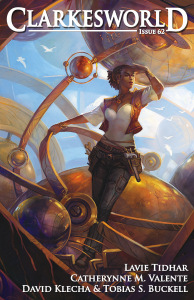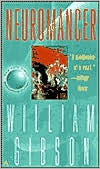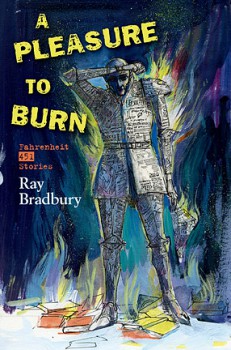Interzone November-December # 237
 The November – December issue of Interzone contains substantial new stories by Lavie Tidhar (“The Last Osama”), Jim Hawkins (“Digital Rites”), Douglas Lain (“Erasing the Concept of Sex from a Potobooth”), and Caspian Gray (Caspian Gray); artwork by Richard Wagner, David Gentry, Steve Hambidge; “Ansible Link” genre news and miscellanea by David Langford; “Mutant Popcorn” film reviews by Nick Lowe; “Laser Fodder” DVD/Blu-Ray reviews by Tony Lee; book reviews by Jim Steel and other contributors.
The November – December issue of Interzone contains substantial new stories by Lavie Tidhar (“The Last Osama”), Jim Hawkins (“Digital Rites”), Douglas Lain (“Erasing the Concept of Sex from a Potobooth”), and Caspian Gray (Caspian Gray); artwork by Richard Wagner, David Gentry, Steve Hambidge; “Ansible Link” genre news and miscellanea by David Langford; “Mutant Popcorn” film reviews by Nick Lowe; “Laser Fodder” DVD/Blu-Ray reviews by Tony Lee; book reviews by Jim Steel and other contributors.
Interzone alternates monthly publication with sister dark horror focused Black Static, published by the fine folks at TTA Press.
You can subscribe to the print version here, or the electronic edition here; there’s also a special discounted rate for a joint subscription to both Interzone and Black Static. Lifetime subscriptions are also available. What you’re buying, in essence, is a 10-year subscription at the current rate. If you think you’re going to live for at least another decade, and you think Interzone will also be around for as long, this could be a bargain for whatever time you and the magazine have after that. If that weren’t enough, you can also opt for joint lifetime sub that gets you sister publication Black Static for a slightly reduced rate. Sign your life away here.
 The November
The November 
 The November issue of Clarkesworld is currently
The November issue of Clarkesworld is currently  The latest Apex Magazine is now
The latest Apex Magazine is now 
 Well, just as everyone is remarking on how the new conversant iPhone is making science fiction true to life, one pretty big part of the science fiction imagination remains just that; while the 21st century has not only arrived, we’re a decade into it, but we won’t be taking any sight seeing trips to Mars in the near future. Even a suborbital cruise will have to wait until 2013. The overly ambitiously and to-date technically impossibly named
Well, just as everyone is remarking on how the new conversant iPhone is making science fiction true to life, one pretty big part of the science fiction imagination remains just that; while the 21st century has not only arrived, we’re a decade into it, but we won’t be taking any sight seeing trips to Mars in the near future. Even a suborbital cruise will have to wait until 2013. The overly ambitiously and to-date technically impossibly named  Back in 1977, science-fiction writer
Back in 1977, science-fiction writer  Alas, it seems as if the optimists who envisioned the twenty-first century as some sort of glittering technological utopia might have gotten some of the details right, but the award for getting right the overall picture of media and marketing malevolence goes to the more pessimistic cyberpunks. As the opening line of the archetypical cyberpunk novel — Gibson’s Neuromancer — describes it:
Alas, it seems as if the optimists who envisioned the twenty-first century as some sort of glittering technological utopia might have gotten some of the details right, but the award for getting right the overall picture of media and marketing malevolence goes to the more pessimistic cyberpunks. As the opening line of the archetypical cyberpunk novel — Gibson’s Neuromancer — describes it:
 As usual, I’m behind the curve. I was delighted when I first heard that Ann VanderMeer was taking over Weird Tales but never got around to reading an issue under her direction because, well, I just never got around to it. Alas, now she’s been relegated to the slush pile as a new owner wants to return the magazine back to its pulp Lovecraftan roots (although, the
As usual, I’m behind the curve. I was delighted when I first heard that Ann VanderMeer was taking over Weird Tales but never got around to reading an issue under her direction because, well, I just never got around to it. Alas, now she’s been relegated to the slush pile as a new owner wants to return the magazine back to its pulp Lovecraftan roots (although, the The new
The new